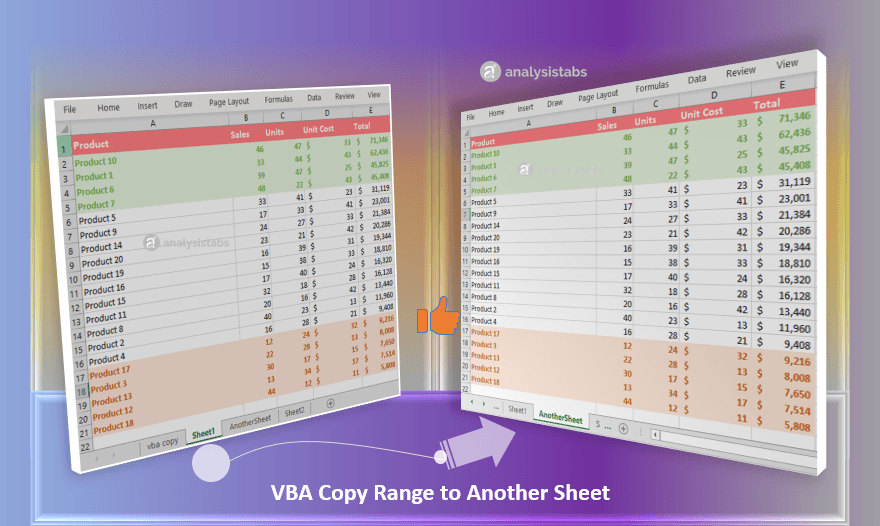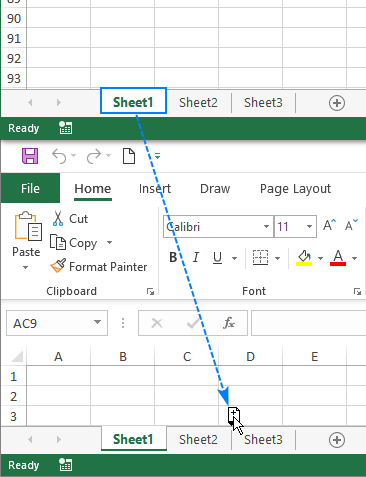Effortlessly Copy Excel Conditional Formatting to Another Sheet

When working in Microsoft Excel, conditional formatting is a dynamic tool that enables users to visually distinguish important data patterns through color scales, data bars, and icons based on specific criteria. This feature not only highlights crucial data points but also helps in streamlining workflows by making datasets more intuitive to interpret. However, a common challenge arises when you need to replicate this formatting across multiple sheets within a workbook. Fortunately, Excel offers a seamless way to copy conditional formatting to another sheet, ensuring consistency and efficiency in your data analysis tasks.
Understanding Conditional Formatting

Conditional formatting in Excel allows for highlighting cells based on rules you set. Here are some key features of conditional formatting:
- Color Scales: Highlight cells with different colors based on their values.
- Data Bars: Fill cells with a gradient or bar that visually represents the cell's value.
- Icon Sets: Add icons like arrows or flags to reflect the data's condition.
- Custom Formulas: Apply formatting using custom logical formulas to meet your unique requirements.
Understanding the type of conditional formatting rule you've applied is crucial as it will dictate how you copy it to another sheet.
Steps to Copy Conditional Formatting

Here's how you can effortlessly copy conditional formatting from one Excel sheet to another:
Step 1: Prepare Your Source Sheet

Before copying the formatting, ensure that your source sheet has the conditional formatting rules set up as desired:
- Select the cells where conditional formatting is applied.
- Check if the formatting rules are correct by navigating to Home > Conditional Formatting > Manage Rules.
- Verify that these rules meet your criteria for the target sheet as well.
Step 2: Select and Copy the Cells

Copy the cells with the conditional formatting:
- Click on the cell or range of cells you want to copy formatting from.
- Press Ctrl + C (Windows) or Command + C (Mac) to copy.
Step 3: Paste Formatting to the Target Sheet

Once your formatting is copied, here's how to paste it:
- Switch to the target sheet where you want to apply the formatting.
- Select the destination cells or range where you want to apply the formatting.
- Right-click on the selected area and choose Paste Special, or go to Home > Paste > Paste Special.
- In the Paste Special dialog box, select Formats and click OK.
Your conditional formatting will now be applied to the selected cells in the target sheet.
Step 4: Adjust Formatting if Necessary

Check to ensure that the conditional formatting appears correctly on the new sheet. Sometimes, relative references or cell formats might require adjustments:
💡 Note: Ensure your conditional formatting rules do not rely on absolute references that might not exist in the new sheet. Adjust these references to match the target sheet's structure.
Advanced Tips and Tricks

Here are some additional tips for mastering conditional formatting replication:
- Use Format Painter: For simple formatting, the Format Painter tool can quickly replicate formatting across multiple cells or sheets.
- Named Ranges: Create named ranges for cell references used in conditional formatting rules. This way, when you copy rules, Excel can more easily adapt these ranges to the new sheet.
- Macros and VBA: If you frequently copy formatting between sheets, consider recording a macro or writing VBA code to automate the process for greater efficiency.
Mastering these techniques can significantly enhance your ability to manage data across multiple sheets efficiently.
Troubleshooting and Common Issues

Here are some common issues you might encounter when copying conditional formatting:
- Incorrect Data Type: Make sure that the data in the source and target cells matches or at least can be formatted in a similar way.
- Cell References: Check for any cell references in your conditional formatting rules, especially if they're absolute, as they might not point to the intended cells on the target sheet.
- Formatting Overlap: If the target cells already have formatting, Excel might not apply the new conditional formatting correctly. Clear existing formatting before copying if necessary.
👀 Note: Consider using 'Stop If True' or 'Evaluate All' rule settings to avoid conflicts when copying formatting rules to new sheets.
Maintaining Data Integrity and Performance

While copying conditional formatting, it's essential to keep the following in mind:
- Data Consistency: Ensure the formatting enhances data readability without altering its meaning.
- Performance: Excessive conditional formatting can slow down Excel. Use it judiciously to maintain workbook performance.
🛠 Note: Overuse of conditional formatting might impact Excel's performance, especially in large datasets. Consider consolidating complex formatting into a single rule where possible.
The ability to replicate conditional formatting across different sheets within a workbook is invaluable for maintaining consistency, ensuring data is easily interpretable, and ultimately making your workflow more efficient. Whether you're a data analyst presenting data, an office worker managing financial reports, or anyone looking to streamline spreadsheet use, mastering this technique allows you to focus more on analysis rather than formatting details.
How do I ensure that copied conditional formatting behaves the same on the target sheet?

+
Ensure cell references are relative or named ranges are used. Also, adjust formulas to reflect the target sheet’s data structure if necessary.
What should I do if the conditional formatting doesn’t appear on the target sheet?

+
Check if the target cells already have formatting that might interfere with the conditional formatting. Consider clearing the existing formatting or using Paste Special > Values to maintain data integrity.
Can I use VBA to automate copying conditional formatting between sheets?

+
Yes, you can record a macro or write VBA code to automate this process, especially useful for repetitive tasks involving multiple sheets.
Is there a limit to how many conditional formatting rules I can copy?

+
While Excel does have a limit on the number of conditional formatting rules per worksheet, copying these rules between sheets typically doesn’t reach this limit unless your source sheet has an excessive number of rules.
How can I avoid performance issues when copying conditional formatting?

+
To maintain Excel performance, consolidate complex conditional formatting rules, apply formatting only where necessary, and consider using named ranges instead of many individual cells.